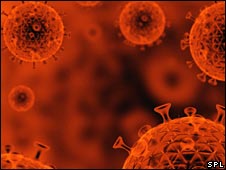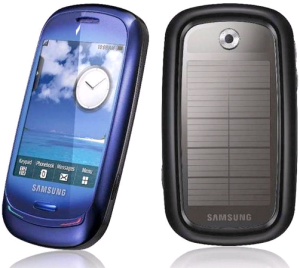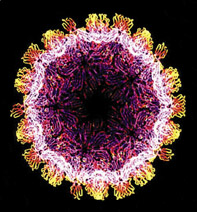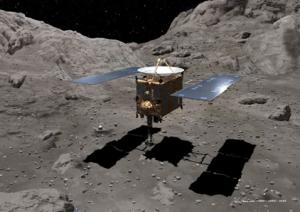DailyTech – Batteries Made Entirely From Liquids Could Store Massive Amounts of Energy.
A group of researchers from MIT is working on a method of designing large, eco-friendly, stationary batteries that are made entirely from liquid metal and would be capable of storing enormous amounts of power.
The liquid batteries are being eyed as potential storage mediums for power generated by wind farms or solar cells and may one day serve as backup power systems for hospitals. Hospitals today relay on massive generators for power in emergencies.
One of the MIT researchers, Don Sadoway, said, “Since these batteries won’t be in someone’s hand or in a car, we don’t have to make them crash-worthy, idiot-proof, and it doesn’t have to operate at around body temperature.”
The battery Sadoway and his team have developed has no solid materials in them from the electrodes, membranes and any other parts of the battery. The anode, cathode, and membrane of the battery designed by the team are all made from molten liquids.
The team has tried many different combinations of liquids over the years in the battery. One of the first liquid metal combinations tried was molten antimony and magnesium with sodium sulfide between the two to store energy.
TweakWin7.com – Windows 7 Tweaks, Tips and Secrets.
Very good website for Windows 7 tweaks and such.
Nanotechnology may offer alternative to radiation for cancer patients.
Jie Chen, a nanotechnology engineer at the University of Alberta, is using nanotechnology to develop new cancer treatments that could one day replace radiation and chemotherapy. He is doing experiments with injected nanoparticles that contain a bamboo compound that is sensitive to ultrasound.
“So when the ultrasound is used and treated or targeted towards these compounds, then you will activate and generate something which can destroy the cancer, so it’s much safer compared to the conventional radiation.”
Dr. Nils Petersen, director general of the National Institute for Nanotechnology in Edmonton, said nanotech promises better, faster and cheaper ways of diagnosing and treating disease, developing drugs — even regrowing teeth.
“It is going to be pervasive, and it’s going to be something that will influence and transform what we’re doing over the next several decades,” Petersen said.
DailyTech – Stem Cells Replace Dead Brain Tissue in Stroke-Victim Rats.
In the recent study, a team led by Dr. Mike Modo of the Institute of Psychiatry, King’s College London investigated replacing stroke-damaged tissue in rats with new tissue from stem cells. Strokes, caused by blockages in brain blood vessels lead to dead areas of brain tissue. Past studies have looked at replacing this dead tissue with stem cells, which would grow into new brain tissue. However, they have met with little success.
The new study, though, shows such growth is possible; the cells just need a scaffolding to grow. In past studies, the cells migrated to other areas of the brain, making them essentially useless in fixing the problem. In the new study researchers attach them to a tiny scaffold made of a biodegradable polymer called PLGA, and coated this scaffolding in neural stem cells. The result is that the damaged brain tissue is regrown successfully in just 7 days. The technique has a strong likelihood of being able to…
February 17th, 2009
admin
BBC NEWS | Health | HIV gene therapy trial promising.
One of the first attempts to use gene therapy to treat HIV has produced promising results in clinical trials.
When the therapy was tested on 74 patients, it was shown to be safe and appeared to reduce the effect of the virus on the immune system.
In theory, one treatment should be enough to replace the need for a lifetime of antiretroviral therapy.

February 17th, 2009
admin
BBC NEWS | Science & Environment | Galaxy has ‘billions of Earths’.
There could be one hundred billion Earth-like planets in our galaxy, a US conference has heard.
Dr Alan Boss of the Carnegie Institution of Science said many of these worlds could be inhabited by simple lifeforms.
He was speaking at the annual meeting of the American Association for the Advancement of Science in Chicago.
So far, telescopes have been able to detect just over 300 planets outside our Solar System.
Very few of these would be capable of supporting life, however. Most are gas giants like our Jupiter, and many orbit so close to their parent stars that any microbes would have to survive roasting temperatures.
But, based on the limited numbers of planets found so far, Dr Boss has estimated that each Sun-like star has on average one “Earth-like” planet.
This simple calculation means there would be huge numbers capable of supporting life

February 17th, 2009
admin
BBC NEWS | Science & Environment | Alien life ‘may exist among us’.
Never mind Mars, alien life may be thriving right here on Earth, a major science conference has heard.
Our planet may harbour forms of “weird life” unrelated to life as we know it, according to Professor Paul Davies, a physicist at Arizona State University.
This “shadow life” may be hidden in toxic arsenic lakes or in boiling deep sea hydrothermal vents, he says.
He has called on scientists to launch a “mission to Earth” by trawling hostile environments for signs of bio-activity.

February 17th, 2009
admin
DailyTech – Samsung Claims New Phone Can Make Solar-Powered Calls.
Samsung claims its new “Blue Earth” smart phone, which comes with solar panels on its back, will be able to get enough sun juice to power a call when outdoors on a reasonably sunny day.

February 17th, 2009
admin
DailyTech – Researchers Create Cancer-Killing Smart Bomb From Plant Virus.
Researchers at North Carolina State University have used modified plant viruses to create the latest version of the smart bomb. By selectively targeting specific cells in the body for payload delivery, it could greatly reduce the effects of toxic treatments like chemotherapy on healthy cells, while increasing the efficacy of killing cancer cells.

February 17th, 2009
admin
DailyTech – Samsung’s Wireless USB Chips Coming to Phones, Cameras.
Samsung has created a new wireless universal serial bus (W-USB) System-On-Chip (SoC) which promises to allow mobile devices such as phones camera and laptops to connect to each other or other devices through an interface that is virtually identical to a cabled USB connection, only without the wires.

February 12th, 2009
admin
DailyTech – Study Finds Japanese Longevity Gene in Europeans.
A German study has found that a gene credited with long life in people of Japanese origin can also be found in Europeans. The research was conducted at Germany’s Kiel University where 388 Germans who were over 100 years old had their genetic makeup compared with 731 younger individuals. The researchers found that a variant of the gene FOXO3A occurred very frequently in the older group.
February 12th, 2009
admin
DailyTech – JAXA’s Asteroid Probe on Journey Back to Earth.
The Japan Aerospace Exploration Agency (JAXA) announced its Hayabusa asteroid probe has turned on its engines to continue the journey home.
“We are continuing to pay careful attention to our onboard equipment and are doing our utmost to operate the Hayabusa with the greatest care,” JAXA said in an official statement. “We will continue to gradually accelerate the Hayabusa until around March 2010 to carry out the second phase orbit maneuvering for returning it to Earth.”
Until recently, Hayabusa has simply glided through space in Earth’s direction, but JAXA officials decided it was time to have it restart one of the probe’s four ion-powered engine to help with the journey.
If all goes according to JAXA’s plans, Hayabusa will finally return to Earth in June 2010. The probe’s important cargo is a canister that contains samples collected from the asteroid Itokawa, which will be a great accomplishment for the Japanese space agency.

Updated my tool today:
# New in 1.35: added direct link option to Imageshack ; completed Windows 7 taskbar API implementation, used while sending, checking for directlink, on errors.. etc
Download here: http://techsuki.net/tinypic-uploader/












Recent Comments